|
Books Should Be Free Loyal Books Free Public Domain Audiobooks & eBook Downloads |
|
|
Books Should Be Free Loyal Books Free Public Domain Audiobooks & eBook Downloads |
|
Literature |
|---|
|
Book type:
Sort by:
View by:
|
By: George MacDonald | |
|---|---|
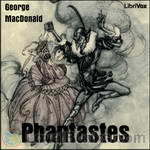 Phantastes
Phantastes
A young man named Anodos experiences dream-like adventures in Fairy Land, where he meets tree-spirits, endures the presence of the overwhelming shadow, journeys to the palace of the fairy queen, and searches for the spirit of the earth. The story conveys a profound sadness and a poignant longing for death. (Brad Powers) | |
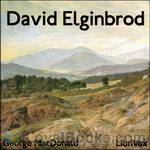 David Elginbrod
David Elginbrod
David Elginbrod was George Macdonald’s first real success, a novel of Scottish country life. Published in 1862, it was dedicated to the memory of Lady Noel Byron. | |
 The Lost Princess (or A Double Story, or The Wise Woman)
The Lost Princess (or A Double Story, or The Wise Woman)
Also known as "A Double Story" or "The Wise Woman."The story of two very spoiled girls, a princess and a peasant, who are kidnapped by a strange woman for a lesson in life. They may not emerge the same... but will their parents be changed for the better too? | |
 Robert Falconer
Robert Falconer
A Victorian novel devoted to beloved character first introduced to readers in MacDonald's David Elginbrod. | |
 Diary of an Old Soul
Diary of an Old Soul
George MacDonald, a Scottish pastor, wrote these short poems, one for each day of the year, to help him with the severer misfortune he was experiencing. The poems are filled with hope and promises of Christ, yet, he also writes about his doubts. These poems are wonderful to listen to for people of any religion. | |
 Alec Forbes of Howglen
Alec Forbes of Howglen
| |
 St. George and St. Michael
St. George and St. Michael
| |
By: Voltaire (1694-1778) | |
|---|---|
 Zadig, or the Book of Fate
Zadig, or the Book of Fate
Zadig, ou La Destinée, (”Zadig, or The Book of Fate”) (1747) is a famous novel written by the French Enlightenment philosopher Voltaire. It tells the story of Zadig, a philosopher in ancient Babylonia. The author does not attempt any historical accuracy, and some of the problems Zadig faces are thinly disguised references to social and political problems of Voltaire’s own day. The book is philosophical in nature, and presents human life as in the hands of a destiny beyond human control. It is a story of religious and metaphysical orthodoxy, both of which Voltaire challenges with his presentation of the moral revolution taking place in Zadig himself... | |
By: Carlo Collodi (1826-1890) | |
|---|---|
 Pinocchio
Pinocchio
This is the wonderful story of Pinocchio, the puppet who must learn many lessons before he can become a real boy. Carved by a woodcarver named Geppetto in a small Italian village, he dreamed of becoming a real boy but strays from the path of goodness many times and is very willing to listen to temptation. He has also been used as a character who is prone to telling lies and fabricating stories for various reasons. The story has appeared in many adaptations in other mediums. Pinocchio has been called an icon of modern culture, and one of most reimagined characters in the pantheon of children's literature... | |
By: Joseph Conrad (1857-1924) | |
|---|---|
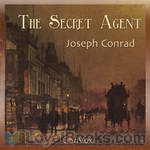 The Secret Agent
The Secret Agent
In this world of modern day spying, Joseph Conrad's spy story, The Secret Agent, is very pertinent. It deals with the over reaching influence of politics in everyday life, the sordid underbelly that lies beneath our civilization's sophisticated veneer, the strange persuasive power of anarchy, unbridled capitalism and its tragic consequences and the scourge of terrorism, exploitation and espionage. In an uncannily prophetic plot, The Secret Agent portrays a sinister scheme to bomb the famous Greenwich Observatory in London... | |
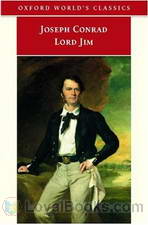 Lord Jim
Lord Jim
This story opens on a ship crowded with pilgrims traveling from Singapore to Mecca for the hajj. A young Englishman is the vessel's first mate. This is his first job and it is something that he has longed for all his life—to be on board a ship that sails the seven seas. One night as the ship sails through the calm waters of the Arabian Sea, it mysteriously begins to shudder. The crew, including the young first mate, believe that it is about to sink. They decide to strike out for themselves in a life-boat, abandoning the passengers... | |
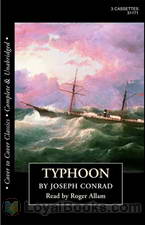 Typhoon
Typhoon
First published in 1902 as a serial in Pall Mall Magazine, the adventure novel follows the disrupting events onboard a steamboat after it takes a perilous course at sea, which triggers a state of mayhem onboard the steamer. Furthermore, the incident prompts the crew to gradually reveal their true nature which is brought to light in the time of crisis. Interestingly, the tale is believed to possess some autobiographical elements taken from Conrad’s own experiences at sea, which provide the novel with a strong foundation, as he effectively uses personification, imagery, and descriptive language to accurately illustrate the danger and chaos instigated by a powerful storm at sea... | |
 The Mirror of the Sea
The Mirror of the Sea
The Mirror of the Sea is a collection of autobiographical essays first published in various magazines 1904-6. Conrad early in his life earned his bread as a Master Mariner in sailing ships. In his Author’s Note to this work, Conrad states,”Beyond the line of the sea horizon the world for me did not exist….Within these pages I make a full confession not of my sins but of my emotions. It is the best tribute my piety can offer to the ultimate shapers of my character, convictions, and, in a sense, destiny—to the imperishable sea, to the ships that are no more, and to the simple men who have had their day.” | |
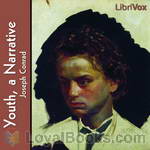 Youth, a Narrative
Youth, a Narrative
An autobiographical short story written in 1898 and included as the first story in the 1902 volume Youth, a Narrative, and Two Other Stories. This volume also includes Heart of Darkness and The End of the Tether, which are concerned with maturity and old age, respectively. “Youth” is narrated by Charles Marlow who is also the narrator of Heart of Darkness, Lord Jim and Chance. Youth depicts his first journey to the East.” | |
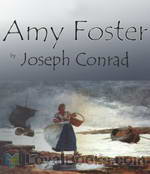 Amy Foster
Amy Foster
Classic shortish story by Conrad that relates his self-thought alienation from British society, as a young foreign man survives a shipwreck off the coast of Kent, England only to be shunned by most of the townsfolk. The one exception is the loving, if dull-witted, Miss Foster. | |
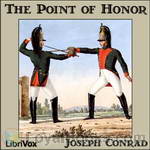 The Point of Honor
The Point of Honor
Set during the Napoleonic Wars, “The Point of Honor” (English title: “The Duel”) features two French Hussar officers, D’Hubert and Feraud. Their quarrel over an initially minor incident turns into a bitter, long-drawn out struggle over the following fifteen years, interwoven with the larger conflict that provides its backdrop. At the beginning, Feraud is the one who jealously guards his honor and repeatedly demands satisfaction anew when a duelling encounter ends inconclusively; he aggressively pursues every opportunity to locate and duel his foe... | |
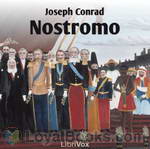 Nostromo
Nostromo
Señor Gould is a native Costaguanan of English descent who owns the silver-mining concession in Sulaco. He is tired of the political instability in Costaguana and its concomitant corruption, and puts his weight behind the Ribierist project, which he believes will finally bring stability to the country after years of misrule and tyranny by self-serving dictators. Instead, the silver mine and the wealth it has generated become a magnet for local warlords to fight over, plunging Costaguana into a new round of chaos... | |
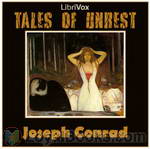 Tales of Unrest
Tales of Unrest
Tales of Unrest (1898) is the first collection of short stories by Joseph Conrad published in his lifetime.Joseph Conrad (1857–1924), a Polish-born English novelist, was a master in the formats of long short story and novella, a form of story longer than conventional short story but shorter than a novel. Some of Conrad's most acclaimed works have been written in these formats, most notably Heart of Darkness (1899).Tales of Unrest contains five stories; Karain: A Memory (written 1897; read by Jhiu), The Idiots (1896; read by Ann Boulais), An Outpost of Progress (1896; read by Kristine Bekere), The Return (1897; read by Raerity) and The Lagoon (1896; read by David Lazarus)... | |
 The Secret Sharer
The Secret Sharer
A young untested ship captain finds a man named Leggatt clinging to the side of his ship. The Captain makes the unusual decision to hide Leggatt in his quarters. What is he thinking? Conrad will tell us. - The Secret Sharer was first published in the August and September 1910 issues of Harper’s Magazine | |
 Victory: An Island Tale
Victory: An Island Tale
Recollections of the life of Axel Heyst, one-time manager of the liquidated Tropical Belt Coal Company in a fictitious island in the Pacific. After retreating from society in response to his professional failures, the misanthrope is drawn back by a romantic affair. (Introduction by S. Kovalchik) | |
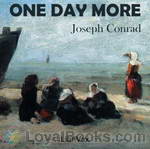 One Day More
One Day More
A one-act play. Eccentric Captain Hagberd has been waiting for years for his son to come home from the sea. He has scrimped and saved, outfitting a house for Harry to inherit upon his return, which will be in only "one day more." He has also planned that Harry will marry Bessie, the repressed maiden next door. Note: The recording was done outside, so there will be some ambient noise (airplanes, lawn mowers, birds, children... etc). | |
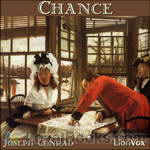 Chance
Chance
Apparently a two part story about a Damsel and a Knight, perhaps a damsel who depends upon the kindness of strangers. It was originally entitled "Dynamite" and first published by installments in the New York Herald. The book itself was the biggest commercial success for Conrad up until that time, 1913. It allowed Conrad for the first time to settle his financial affairs. The author's disdain for people who live on the land is apparent. A new understanding of the word "enthusiastic" is promulgated. And it is a love story. Let us see how the tale goes. | |
 An Outcast Of The Islands
An Outcast Of The Islands
An Outcast of the Islands is the second novel by Joseph Conrad, published in 1896, inspired by Conrad's experience as mate of a steamer, the Vigar. The novel details the undoing of Peter Willems, a disreputable, immoral man who, on the run from a scandal in Makassar, finds refuge in a hidden native village, only to betray his benefactors over lust for the tribal chief's daughter. The story features Conrad's recurring character Tom Lingard, who also appears in Almayer's Folly (1895) and The Rescue (1920), in addition to sharing other characters with those novels... | |
 Under Western Eyes
Under Western Eyes
Under Western Eyes (1911) is a novel by Joseph Conrad. The novel takes place in St. Petersburg, Russia, and Geneva, Switzerland, and is viewed as Conrad's response to the themes explored in Crime and Punishment, Conrad being reputed to have detested Dostoevsky. It is also, some say, Conrad's response to his own early life; his father was a famous revolutionary imprisoned by the Russians, but, instead of following in his father's footsteps, at the age of sixteen Conrad left his native land forever... | |
 Shadow-Line
Shadow-Line
Dedicated to the author's son who was wounded in World War 1, The Shadow-Line is a short novel based at sea by Joseph Conrad; it is one of his later works, being written from February to December 1915. It was first published in 1916 as a serial and in book form in 1917. The novella depicts the development of a young man upon taking a captaincy in the Orient, with the shadow line of the title representing the threshold of this development. The novella is notable for its dual narrative structure. The full, subtitled title of the novel is The Shadow-Line, A Confession, which immediately alerts the reader to the retrospective nature of the novella... | |
 Almayer's Folly
Almayer's Folly
A European businessman and his Malayan wife have a daughter, Nina. A Malayan prince comes to do trade with the businessman and falls in love with the daughter. Conflict arises when other influences cause distrust in the business partnership and the daughter runs off to be with the prince. | |
 Notes on Life and Letters
Notes on Life and Letters
| |
 Works of Joseph Conrad
Works of Joseph Conrad
| |
 Within the Tides
Within the Tides
| |
 Tales Of Hearsay
Tales Of Hearsay
| |
 Falk A Reminiscence
Falk A Reminiscence
| |
 To-morrow
To-morrow
| |
 Gaspar Ruiz
Gaspar Ruiz
| |
 Notes on My Books
Notes on My Books
| |
 Some Reminiscences
Some Reminiscences
| |
By: Harriet Beecher Stowe (1811-1896) | |
|---|---|
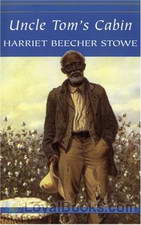 Uncle Tom's Cabin
Uncle Tom's Cabin
Uncle Tom’s Cabin is one of the most controversial novels of the last century, with it’s sentimental portrayal of the anti-slavery movement in the USA. Written in 1852, the novel instantly rose to fame and split Americans up and down the country. Stowe was a passionate abolitionist and was inspired to write Uncle Tom when she spent time in Cincinnati in the early part of the 18th century. She met many slaves who had escaped from Kentucky and was touched by the friendships she built. It was with this sentiment that the novel was born and the deep empathy Stowe had for slaves is evident throughout... | |
 Uncle Tom's Cabin, Young Folks' Edition
Uncle Tom's Cabin, Young Folks' Edition
| |
 Betty's Bright Idea; Deacon Pitkin's Farm; and the First Christmas of New England
Betty's Bright Idea; Deacon Pitkin's Farm; and the First Christmas of New England
| |
 Life of Harriet Beecher Stowe Compiled From Her Letters and Journals by Her Son Charles Edward Stowe
Life of Harriet Beecher Stowe Compiled From Her Letters and Journals by Her Son Charles Edward Stowe
| |
 Oldtown Fireside Stories
Oldtown Fireside Stories
A sequel to Oldtown Folks, featuring some of the same characters, these are 15 charming short stories told by ole' Sam Lawson to entertain Horace and Bill, two impressionable, curious and clever young boys of Oldtown (a fictional 1850's New England village), during evenings gathered around the hearth, or roaming with Sam around the countryside. Stowe faithfully and masterfully captures many of the colloquial expressions, superstitions, beliefs, customs and habits of the period that have almost completely faded from modern American culture, as well as conveying many truths about the human condition that haven't changed a bit. ~ | |
By: Jacob Abbott (1803-1879) | |
|---|---|
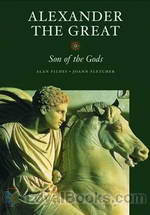 Alexander the Great
Alexander the Great
Tutored by Aristotle, compelled to ascend the throne at the age of 20 when his illustrious father was assassinated, driven by a passion for expanding the borders of his tiny kingdom, Alexander of Macedon was one of the most towering figures of ancient history. He is brought to vivid life in this gripping volume by the American children's writer Jacob Abbott. In his short but eventful life, the young Macedonian king went on to rule over one of the most powerful and largest empires in the ancient world, breaking the hegemony of the powerful Persian dynasty of Darius... | |
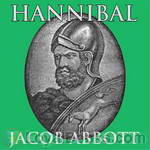 Hannibal
Hannibal
There are certain names which are familiar, as names, to all mankind; and every person who seeks for any degree of mental cultivation, feels desirous of informing himself of the leading outlines of their history, that he may know, in brief, what it was in their characters or their doings which has given them so widely-extended a fame. Consequently, great historical names alone are selected; and it has been the writer's aim to present the prominent and leading traits in their characters, and all the important events in their lives, in a bold and free manner, and yet in the plain and simple language which is so obviously required in works which aim at permanent and practical usefulness... | |
 Forests of Maine Marco Paul's Adventures in Pursuit of Knowledge
Forests of Maine Marco Paul's Adventures in Pursuit of Knowledge
| |
 Rollo's Philosophy. [Air]
Rollo's Philosophy. [Air]
| |
By: F. Scott Fitzgerald (1896-1940) | |
|---|---|
 This Side of Paradise
This Side of Paradise
A romantic and witty novel that has weathered time to remain one of America’s classic pieces. In the shadows of the great Gatsby is another brilliant novel by F. Scott Fitzgerald. This book is evidence to Fitzgerald’s literal genius because it was written by the author in his twenties to mirror his experiences at the time. It paints a picture of what it was like to be a young man or woman in the 20th century and in the wake of the First World War. The book is set on a foundation of socialist principles... | |
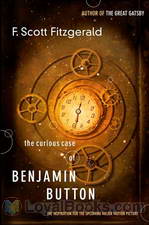 The Curious Case of Benjamin Button
The Curious Case of Benjamin Button
A life lived backwards, with events happening in reverse order forms the strange and unexpected framework of one of F Scott Fitzgerald's rare short stories. The Curious Case of Benjamin Button was published in Collier's in 1927 and the idea came to Fitzgerald apparently from a quote of Mark Twain's in which he regretted that the best part of life came at the beginning and the worst at the end. Fitzgerald's concept of using this notion and turning the normal sequence of life on its head resulted in this delightful, thought provoking fantasy tale... | |
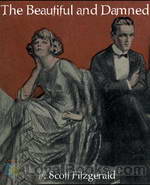 The Beautiful and Damned
The Beautiful and Damned
An idle, extravagant young man is the heir presumptive of his wealthy grandfather, an industrial tycoon. His wife, divinely beautiful and utterly selfish, believes that nothing is more powerful than her own beauty. Together, this couple represents what Fitzgerald famously portrayed as the lost generation of the Jazz Age in several of his novels. In The Beautiful and The Damned, F Scott Fitzgerald explores the trivial and shallow lives of the well-heeled inheritors of the American Dream the second or third generation that can afford to live on the fortunes that their forbears worked so hard to accumulate... | |
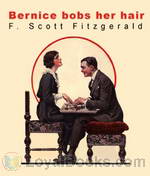 Bernice Bobs Her Hair
Bernice Bobs Her Hair
Pretty but socially clueless Bernice lets her know-it-all cousin push her around, but eventually, something's gotta give! (Introduction by BellonaTimes) | |
By: Baroness Emmuska Orczy (1865-1947) | |
|---|---|
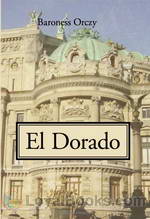 El Dorado
El Dorado
If you've read and loved the exciting classic The Scarlet Pimpernel then you'd probably be delighted to follow the further adventures of the dashing Sir Percy Blakeney. El Dorado by Baronness “Emmuska” Orczy depicts the intrepid swordsman and escape artist in the role of savior of the French royal family. Published in 1913, El Dorado was the fourth in the Pimpernel series of eleven books, numerous short stories and other related writings about her famous British adventurer. However, Orczy did not always follow a strict chronological sequence while publishing the novels and hence, there is plenty of overlap between the time frames of the stories... | |
 The Elusive Pimpernel
The Elusive Pimpernel
First Published in 1908, The Elusive Pimpernel by Baroness Orczy is the 4th book in the classic adventure series about the Scarlet Pimpernel. | |
By: Henry David Thoreau (1817-1862) | |
|---|---|
 Walden
Walden
Two years, two months and two days! This is what forms the time line of one man's quest for the simple life and a unique social experiment in complete self reliance and independence. Henry David Thoreau published Walden in 1884. Originally drafted as a series of essays describing a most significant episode in his life, it was finally released in book form with each essay taking on the form of a separate chapter. Thoreau's parents were in financial straights, but rich intellectually and culturally... | |
 Walking
Walking
This was originally a lecture given by Thoreau in 1851 at the Concord lyceum titled “The Wild” . He revised it before his death and it was included as part of the June 1862 edition of Atlantic Monthly. This essay appears, on the surface, to be simply expounding the qualities of Nature and man’s place therein. Through this medium he not only touches those subjects, but with the implications of such a respect for nature, or lack thereof. | |
 Wild Apples
Wild Apples
| |
By: Anna Sewell | |
|---|---|
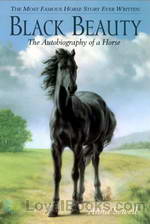 Black Beauty
Black Beauty
This unique tale is narrated by a lovely, gentle horse named Black Beauty and has remained a children's classic since it was first published in 1877. It earned eternal name and fame for its author Anna Sewell, an invalid who died within a few months of publication. According to current estimates, it has sold more than fifty million copies world wide, been translated into many languages and delighted generations of children. The original title page reads: Black Beauty: Translated from the original Equine by Anna Sewell and this gives the reader an instant glimpse into what the book will be about... | |
By: Mary Wollstonecraft Shelley | |
|---|---|
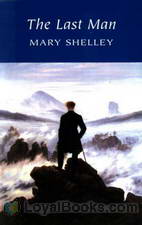 The Last Man
The Last Man
The Last Man is an early post-apocalyptic science fiction novel by Mary Shelley, which was first published in 1826. The book tells of a future world that has been ravaged by a plague. The plague gradually kills off all people. Lionel Verney, central character, son of a nobleman who gambled himself into poverty, finds himself immune after being attacked by an infected “negro,” and copes with a civilization that is gradually dying out around him. | |
 Mathilda
Mathilda
The finished draft of a short novel by Mary Shelley. Its adult theme, concerning a father’s incestuous love for his daughter and its consequences, meant that the manuscript was suppressed by Shelley’s own father, and not published until 1959, more than a hundred years after her death. Summary by Cori Samuel | |
 Proserpine and Midas
Proserpine and Midas
| |
 Notes to the Complete Poetical Works of Percy Bysshe Shelley
Notes to the Complete Poetical Works of Percy Bysshe Shelley
| |
By: Henry James (1843-1916) | |
|---|---|
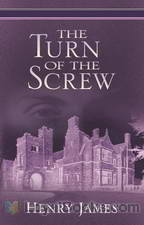 The Turn of the Screw
The Turn of the Screw
Christmas Eve. Guests round a fireside begin telling each other ghost stories. One of them relates a true incident involving the governess of his little nephew and niece. Strange events begin to take place, involving the housekeeper, a stranger who prowls round the grounds, a mysterious woman dressed in black and an unknown misdemeanor committed by the little nephew. The Turn of the Screw by Henry James was published in 1893 and it remains one of the best-known and admired works of this great American writer... | |
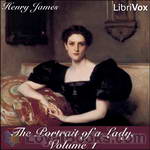 The Portrait of a Lady
The Portrait of a Lady
Regarded as one of James’ finest works, The Portrait of a Lady revolves around the life and the development of Isabel Archer as she embarks on a scrupulous journey of self-discovery, forced to choose between her individual freedom and the preset conventions of society. Moreover, the novel explores themes of existentialism, objectification of women, wealth, suffering, and the conflict between individual longing and social conformity. Set in the second half of the 19th century, the novel opens with the introduction of Isabel Archer, a naive young woman from Albany, New York... | |